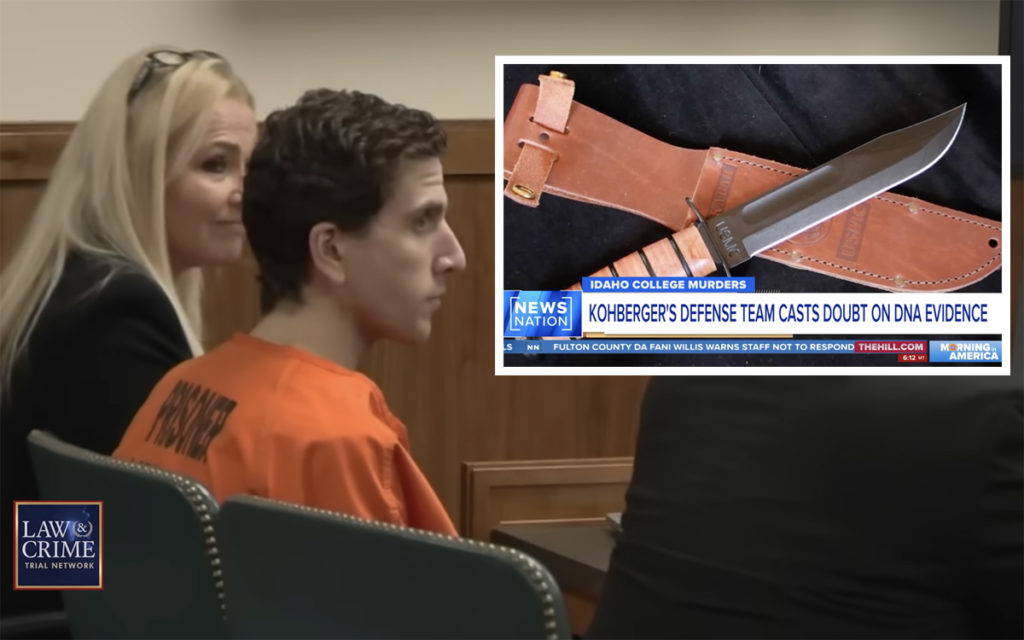The case of the University of Idaho murders has seemed pretty open-and-shut since the arrest of Bryan Kohberger. The evidence against the criminology student was voluminous — and only seemed to grow with each search warrant.
How does one defend such a case? As we approach the October trial date, we’re finally finding out. We’ve seen a couple different tactics so far. The so-called “alibi” seems to be a huge bust, but what about the attack on the prosecution’s biggest piece of evidence? The so-called smoking gun?
One of the big keys to finding a suspect so quickly in the brutal quadruple murders was the fact a sheath had been left behind, presumably from the murderer’s knife. When DNA was taken from that sheath, it was run through genealogical testing — wide comparisons to all DNA on file, including from sites like 23andMe and Ancestry.com. That reportedly led straight to Kohberger, right through his father. Once the Washington State University student was arrested, his DNA was taken — and matched near perfectly. Per the state’s filing, the DNA markers in the samples were “at least 5.37 octillion times more likely to be seen if (the) Defendant is the source than if an unrelated individual randomly selected from the general population is the source.” OCTILLION. That’s a lot of zeroes.
Related: Erin Patterson’s Ex ‘Suspected He Had Been Poisoned’ A Year Before In-Laws Were Killed!
DNA at the scene — on the weapon holder? It’s about the most compelling evidence you can get! But… what if prosecutors couldn’t even use it?
According to multiple news outlets, the defense team filed an affidavit on Wednesday attacking the science behind genealogical DNA testing. In the filing, Dr Leah Larkin, a DNA expert out of California, argues that testing kits people send in to these companies aren’t regulated, so the whole process is shaky. She explains:
“A poor-quality kit might have too few matches or it just might have phantom matches that are not real measures of relationship.”
Interesting.
Didn’t the defense already attack the chain of custody with the DNA or something? And claim there were lots of men’s DNA at the house? And there was a problem with the first match?
Well, this could be a stronger argument, says Dr. Greg Hamikian, a forensic biologist at Boise State University. He explained to NewsNation on Friday:
“This is a more aggressive challenge where they’re saying wait a minute, is this fruit of a poisoned apple or something and how did you get this genealogical match? Do we know it’s a good match? Maybe you got tunnel vision early on in the case through bad genealogy.”
Larkin also noted that genealogical DNA matches have been proven wrong after the fact. Dr. Hamikian, who heads the Idaho Innocence Project referred to a specific case he’d been involved on:
“Our experience, when we worked with the police, the first hit they got through genealogy. The guy they thought was a good suspect, he’d been in the area, he sounded like a good match — they went to test him because his father had it was a close match, and it turned out the suspect was wrong.”
Fair enough, but… does that case have anything to do with this case? If the defense could get the DNA evidence thrown out, it would obviously lead to a lot more being lost to the prosecution. The DNA led to the arrest, so everything they got after that, including in the raid on his parents’ place in Pennsylvania, could be hidden from the jury!
On the other hand, the use of this relatively new genealogy science has led to a LOT of crimes solved in recent years, including the capture of the Golden State Killer. Just because it isn’t flawless doesn’t mean it’s going away any time soon.
Assuming it’s just the defense expert testifying against the prosecution’s expert, well, we don’t like their chances. There’s just so much other evidence, from the car to the phone to witnesses who saw him around the victims’ place of work. Too much to dismiss.
What do YOU think, Perezcious readers? Is there any chance the DNA gets thrown out? Or the defense’s expert convinces the jury it’s wrong?? See more on the latest development in the defense’s case (below):
[Image via Law&Crime Network/NewsNation/YouTube.]
Related Posts
CLICK HERE TO COMMENT-
Categories






































